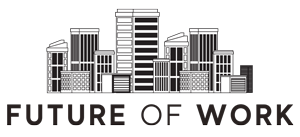This year marked the reintroduction of many organisations’ return to office policies following the shift to hybrid and remote working models in 2020. Many leaders are planning to or are currently implementing mandates to bring workers back to the office.
While this might have been initiated by several factors, from the need for more human interactions to a sense of greater workplace control, HR and business leaders must not revert to an office-centric approach to work. This would overlook the various benefits of remote and hybrid work, including greater employee flexibility and rest, advantages for underrepresented and neurodiverse talent and opportunities to reduce overheads on physical premises.
Gartner research showed that 71% of HR leaders are more concerned about employee collaboration than before COVID-19. Business Leaders are increasingly concerned about the connectedness of employees to their organisations. Rather than making quick decisions to revert to old ways of working based on their concerns, leaders must fully understand the challenges they face in order to consider the best course of action for their organisation.
Redefining Workplace Culture in a Hybrid World
One of the key considerations for reevaluating the need for return to office policies is workplace culture. Organisational culture, engagement and morale are the top concerns for CEOs in relation to an office and home working policy. However, weakened workplace culture is not a result of having fewer employees onsite, but is a failure to intentionally build cultural connectedness into the hybrid workspace.
Currently, cultural connectedness to the workplace is low regardless of worker location, and leaders can’t implement return to office policies or set overly rigid limits to hybrid and remote work without alienating some employees. Gartner found that for employees with a lack of flexibility, only 18% felt highly connected to their company culture. However, more than half (53%) of employees with radical flexibility around location, schedules and work volume that felt highly connected to their workplace.
Leaders can no longer view hybrid work as a disruption to cultural connectedness and must start to see it as an opportunity. Work itself, not the office, has become the most frequent constant cultural experience for hybrid and remote workers, providing leaders with an opportunity to use work, as a vessel to drive cultural connectedness.
Performance vs Productivity
Another facet of hybrid work that is troubling leaders is employee performance. For some organisations, hybrid and remote work represents a perceived loss of visibility, as shown in 2021 with 64% of managers believing that office workers were higher performers than remote workers. However, data from the same period showed that full-time remote workers were, in fact, more likely to be high performers. Equally, Gartner research from this year indicates that when organisations deliver radical flexibility, the percentage of employees defined as high performers increases by 40%.
Visibility-based performance indicators are no longer fit for purpose. It can be harder to evaluate performance and appreciate the unique challenges the workforce faces in a hybrid environment. Importantly, remote work has not compromised digital workers’ productivity. In fact, letting go of the traditional model of synchronised in-person working in favour of a more distributed approach where not all team members are engaged simultaneously has led to productivity gains for many.
In response, leaders embrace hybrid and remote working where possible and evaluate its value for their business and workforce. They should introduce and support new hybrid work competencies, such as collaborative teamwork and implement structured processes for skills development. Additionally, leaders should be discerning when it comes to adopting new technologies; employees often find themselves toggling between numerous applications, leading to higher levels of fatigue. By implementing only key technologies that truly enhance productivity and collaboration, leaders can help alleviate this burden and streamline the work process to balance productivity with the need for a strengthened workplace culture.
To fully evaluate a hybrid or in-person working model, leaders must also understand the importance of managers as a critical touchpoint for employees. But first, they must acknowledge that managers are now operating in an ever more challenging work environment.
Empowering Managers for Inclusive Leadership in a Changing World
For example, many employees are geographically dispersed, which requires managers to adapt to their team’s wide range of individual preferences and needs.
In a post-pandemic world, employee expectations of their organisations are evolving – with the advent of new technologies and fewer in-person interactions, managers have become the primary or sole human point of contact for many employees. Managers must develop the skills to navigate difficult conversations and foster team cohesion and inclusion. Organisations need to make room for well-being when it comes to managers’ workloads by helping managers radically reprioritise and giving them permission to own their workloads and focus on developing human-centric relationships. Furthermore, when it comes to supporting teams’ health and resilience during disruption, it is imperative for managers to show that they understand how their teams’ need change in light of evolving circumstances.
Organisations need their managers to rise to this challenge, but this is easier said than done. Managers not only need opportunities to practice, but the freedom to make mistakes and learn, so they can demonstrate empathy during difficult conversations. Additionally, leaders should work with HR and learning practitioners to offer training in which managers can learn from experts and each other in a “safe to fail” learning environment. Leaders should simultaneously work to empower managers by giving them the operational flexibility to reprioritise resources at speed.
Return to office policies and mandates are not the only solution to companies’ perceived problems on organisational culture and employee productivity, but they do offer compelling benefits for both employees and employers. To fully realise these benefits, HR leaders must create a workplace that satisfies employees’ needs while also generating the desired business outcomes.

Caitlin Duffy is a Research Director in the Human Resources practice, developing insights and best practices on Employee Experience. Her team covers topics such as employee experience design and delivery, engagement, EVP strategy, hybrid work, and culture. Her work extends into broader talent management topics such as DEI and the future of work. Prior to joining the Employee Experience research team, Ms. Duffy conducted research on leader and manager effectiveness, including topics such as high-potential talent management, succession, and leadership development.






